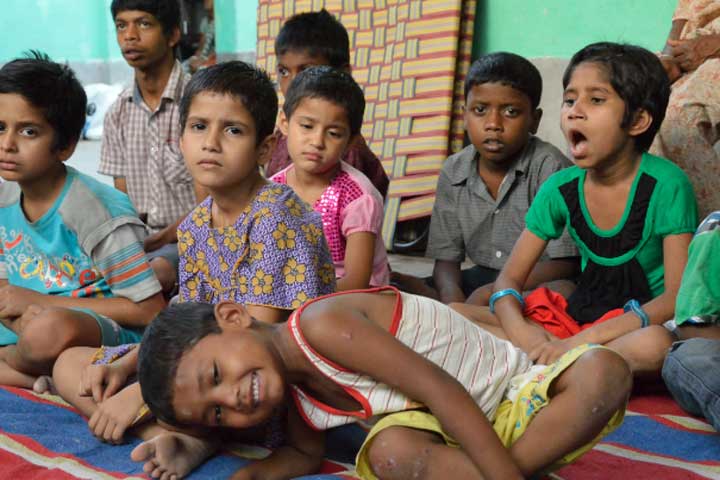Starting an orphanage is a noble endeavor that requires careful planning, dedication, and a genuine commitment to improving the lives of vulnerable children.
While the process may seem daunting, with the right approach and resources, you can create a safe and nurturing environment where orphaned or abandoned children can thrive.
In this guide for how to start an orphanage, we will outline the essential steps and considerations involved in starting an orphanage.
Tips to know while Starting an Orphanage
Conduct Research and Planning
Good planning and research are important to start an orphanage. It’s crucial to delve deeper into understanding the nuanced needs of orphaned children in your community or region. This involves conducting thorough research and analysis to gain insights into the specific challenges they face and the support systems currently in place.
Begin by reaching out to local social service agencies, child welfare organizations, and community groups that work with orphaned or vulnerable children. Engage in conversations with professionals, caregivers, and even the children themselves to gain firsthand perspectives on their experiences, struggles, and unmet needs.
Develop a Mission and Vision
The mission and vision of your orphanage serve as the guiding principles that shape its purpose, direction, and impact. As you define these foundational elements, it’s essential to articulate clear goals, values, and the type of services you aim to provide, while considering the unique needs of the children you will serve and the overarching philosophy guiding your organization.
Your orphanage’s mission may focus on providing a safe, nurturing, and supportive environment where orphaned or abandoned children can heal, grow, and thrive. This could encompass a commitment to promoting their physical, emotional, educational, and social well-being, with the ultimate goal of empowering them to reach their full potential and become contributing members of society.
Establish Legal Structure and Compliance
Researching the legal requirements for establishing an orphanage is a crucial step in ensuring compliance with relevant laws and regulations. Here are the typical legal considerations you may encounter when starting an orphanage in many countries or states:
- Nonprofit Organization Registration
- Licensing and Permits.
- Background Checks and Clearances.
- Health and Safety Regulations.
- Staffing Requirements.
- Record-Keeping and Reporting Obligations.
- Legal Guardianship and Custody.
Secure Funding and Resources
Financing the operations of an orphanage requires careful planning and consideration of various funding sources to cover start-up costs, ongoing expenses, and staff salaries. Here are some strategies to explore:
- Grants.
- Donations.
- Fundraising Events.
- Partnerships.
- Crowdfunding.
- Social Enterprise.
- Endowment Funds.
- Government Funding.
Create a Business Plan:
The business plan for our orphanage outlines a clear organizational structure, budget, and staffing plan, ensuring efficient operations and accountability.
With diverse fundraising strategies, including grant writing, donor cultivation, and special events, we aim to secure sustainable funding to support our programs and services.
Our focus on providing comprehensive care, educational support, and psychosocial services to orphaned children is complemented by strategic marketing and outreach efforts to raise awareness and build a strong support network within the community.
Long-term sustainability goals guide our efforts to innovate, grow, and maximize our impact, ensuring that we continue to meet the evolving needs of the children in our care for years to come.
Find a Suitable Location:
We will select a location for our orphanage that prioritizes safety, accessibility, and the well-being of the children. Our ideal site will be conveniently situated near schools, healthcare facilities, recreational areas, and community resources to ensure easy access to essential services and enriching opportunities.
By choosing a location with proximity to these amenities, we aim to create a supportive environment that fosters the holistic development and happiness of the children in our care.
Additionally, we will consider factors such as transportation accessibility, neighborhood safety, and the availability of green spaces to promote physical activity and outdoor recreation. Through careful consideration of these factors, we will establish a nurturing home where children can thrive and flourish.
Build Infrastructure and Facilities
Depending on our budget and resources, we will assess whether to purchase or lease property and undertake construction or renovation to create suitable facilities for our orphanage.
Our aim is to provide comfortable living quarters, communal spaces, classrooms, recreational areas, and administrative offices that meet the diverse needs of the children and staff. Whether purchasing or leasing, we will prioritize safety, accessibility, and functionality, ensuring that the facilities offer a nurturing environment conducive to learning, growth, and well-being.
By carefully considering our options and making strategic decisions, we will create a welcoming home where children feel supported, valued, and empowered to thrive.
Recruit and Train Staff
Hire qualified and compassionate staff members who are committed to the well-being and development of orphaned children. Provide thorough training on child care practices, safety protocols, trauma-informed care, and any specialized services your orphanage will offer.
Develop Programs and Support Services
Design and implement a range of programs and support services tailored to the unique needs of the children in your care. This may include educational support, counseling and therapy, life skills training, recreational activities, and opportunities for cultural and spiritual enrichment.
Establish Partnerships and Collaborations
Forge partnerships with local government agencies, community organizations, schools, healthcare providers, and other stakeholders to enhance the effectiveness and reach of your orphanage’s programs and services.
Conclusion
So, this was a quick guide on how to start an orphanage easily. It is a challenging yet rewarding endeavor that can make a profound difference in the lives of orphaned and vulnerable children.
By following these essential steps and committing to the well-being and development of the children in your care, you can create a safe, nurturing, and supportive environment where every child has the opportunity to thrive and fulfill their potential.
Thanks for visiting. Get more guides on How2guide.

